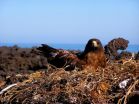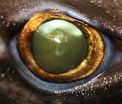(Press-News.org) MINNEAPOLIS – In the largest study of its kind, researchers suggests that in older people, not getting enough vitamin D may double the risk of developing dementia and Alzheimer's disease. The study is published in the August 6, 2014, online issue of Neurology®, the medical journal of the American Academy of Neurology.
The study looked at blood levels of vitamin D, which includes vitamin D from food, supplements and sun exposure. Dietary vitamin D is found in fatty fish such as salmon, tuna or mackerel and milk, eggs and cheese.
"We expected to find an association between low Vitamin D levels and the risk of dementia and Alzheimer's disease, but the results were surprising—we actually found that the association was twice as strong as we anticipated," said study author David J. Llewellyn, PhD, of the University of Exeter Medical School in the United Kingdom.
For the study, 1,658 people over the age of 65 who were dementia-free had their vitamin D blood levels tested. After an average of six years, 171 participants developed dementia and 102 had Alzheimer's disease.
The study found that people with low levels of vitamin D had a 53-percent increased risk of developing dementia and those who were severely deficient had a 125-percent increased risk compared to participants with normal levels of vitamin D.
People with lower levels of vitamin D were nearly 70 percent more likely to develop Alzheimer's disease and those who had severe deficiency were over 120 percent more likely to develop the disease.
The results remained the same after researchers adjusted for other factors that could affect risk of dementia, such as education, smoking and alcohol consumption.
"Clinical trials are now needed to establish whether eating foods such as oily fish or taking vitamin D supplements can delay or even prevent the onset of Alzheimer's disease and dementia. We need to be cautious at this early stage and our latest results do not demonstrate that low vitamin D levels cause dementia. That said, our findings are very encouraging, and even if a small number of people could benefit, this would have enormous public health implications given the devastating and costly nature of dementia," said Llewellyn.
INFORMATION:
The study was supported by the National Heart, Lung, and Blood Institute, the National Institute of Neurological Disorders and Stroke, the National Institute on Aging, the Alzheimer's Association, the Mary Kinross Charitable Trust, the James Tudor Foundation, the Halpin Trust, the Age Related Diseases and Health Trust, the Norman Family Charitable Trust and the UK National Institute for Health Research.
To learn more about dementia, please visit http://www.aan.com/patients.
The American Academy of Neurology, an association of more than 28,000 neurologists and neuroscience professionals, is dedicated to promoting the highest quality patient-centered neurologic care. A neurologist is a doctor with specialized training in diagnosing, treating and managing disorders of the brain and nervous system such as Alzheimer's disease, stroke, migraine, multiple sclerosis, brain injury, Parkinson's disease and epilepsy.
For more information about the American Academy of Neurology, visit http://www.aan.com or find us on Facebook, Twitter, Google+ and YouTube.
Media Contacts:
Rachel Seroka, rseroka@aan.com, (612) 928-6129
Michelle Uher, muher@aan.com, (612) 928-6120
Study: Link between vitamin D and dementia risk confirmed
2014-08-06
ELSE PRESS RELEASES FROM THIS DATE:
Link between vitamin D and dementia risk confirmed
2014-08-06
Vitamin D deficiency is associated with a substantially increased risk of dementia and Alzheimer’s disease in older people, according to the most robust study of its kind ever conducted.
An international team, led by Dr David Llewellyn at the University of Exeter Medical School, found that study participants who were severely Vitamin D deficient were more than twice as likely to develop dementia and Alzheimer’s disease.
The team studied elderly Americans who took part in the Cardiovascular Health Study. They discovered that adults in the study who were moderately deficient ...
Aggressive outreach increases organ donation among Hispanic Americans
2014-08-06
Bottom Line: An outreach campaign that included local media and culturally sensitive educational programs in targeted neighborhoods was associated with an increase in consent rates for organ donation among Hispanic Americans in the Los Angeles area.
Author: Ali Salim, M.D., of Brigham and Women's Hospital, Boston, and colleagues.
Background: Nearly 20 people die each day waiting for an organ transplant. The organ shortage affects all ethnic groups but is more pronounced in minority populations.
How the Study Was Conducted: The authors examined an aggressive outreach ...
History of fire and drought shapes the ecology of California, past and future
2014-08-06
Fire season has arrived in California with vengeance in this third year of extended drought for the state. A series of large fires east of Redding and Fresno, in Yosemite, and on the Oregon border prompted Gov. Jerry Brown to declare a state of emergency on Sunday, August 3rd.
As force of destruction and renewal, fire has a long and intimate history with the ecology of California. Ecological scientists will discuss aspects of that history in detail at the upcoming 99th Annual Meeting of the Ecological Society of America on August 10 – 15th, 2014.
"Big fires today are ...
Galápagos hawks hand down lice like family heirlooms
2014-08-06
Say what you will about the parasitic lifestyle, but in the evolution of life on Earth, it's a winner.
Given that about half of all known species are parasites, biologists have long hypothesized that the strategy of leeching off other organisms is a major driver of biodiversity. Studying populations of Galápagos hawks (Buteo galapagoensis) and feather lice that live in their plumage (Degeeriella regalis), a group led by University of Arizona ecologists and evolutionary biologists has gathered some of the first field evidence suggesting that a phenomenon called co-divergence ...
NASA's Hubble finds supernova star system linked to potential 'zombie star'
2014-08-06
Using NASA's Hubble Space Telescope, a team of astronomers has spotted a star system that could have left behind a "zombie star" after an unusually weak supernova explosion.
A supernova typically obliterates the exploding white dwarf, or dying star. On this occasion, scientists believe this faint supernova may have left behind a surviving portion of the dwarf star -- a sort of zombie star.
While examining Hubble images taken years before the stellar explosion, astronomers identified a blue companion star feeding energy to a white dwarf, a process that ignited a nuclear ...
New research links tornado strength, frequency to climate change
2014-08-06
TALLAHASSEE, Fla. — New research by a Florida State University geography professor shows that climate change may be playing a key role in the strength and frequency of tornadoes hitting the United States.
Published Wednesday in the journal Climate Dynamics, Professor James Elsner writes that though tornadoes are forming fewer days per year, they are forming at a greater density and strength than ever before. So, for example, instead of one or two forming on a given day in an area, there might be three or four occurring.
"We may be less threatened by tornadoes on a ...
Fipronil and imidacloprid reduce honeybee mitochondrial activity
2014-08-06
PENSACOLA, Fla. — New research published in Environmental Toxicology and Chemistry addresses the effects of two broad-spectrum systemic insecticides, fipornil and imidacloprid, on honeybees. These insecticides are widely used in agriculture, and the authors conclude that fipronil and imidacloprid are inhibitors of mitochondrial bioenergetics, resulting in depleted cell energy. This action can explain the toxicity of these compounds for honeybees.
Scientists are urgently trying to determine the causes of colony collapse disorder and the alarming population declines of ...
Community religious beliefs influence whether wives work outside home, Baylor study finds
2014-08-06
Married women who live in communities in which a higher proportion of the population belongs to conservative religious traditions — such as evangelical or Mormon — are more likely to choose not to work outside the home, even if the women are not members of those faith groups, according to a Baylor University study.
The study — "Work-Family Conflict: The Effects of Religious Context on Married Women's Participation in the Labor Force" — appears in the journal Religions in a special issue, "Religion, Spirituality, and Family Life."
While previous research has shown individual ...
Photon hunting in the twilight zone
2014-08-06
The eyes of deep-sea bioluminescent sharks have a higher rod density when compared to non-bioluminescent sharks, according to a study published August 6, 2014 in the open-access journal PLOS ONE by Julien M. Claes, postdoctoral researcher from the FNRS at Université catholique de Louvain (Belgium), and colleagues. This adaptation is one of many these sharks use to produce and perceive bioluminescent light in order to communicate, find prey, and camouflage themselves against predators.
The mesopelagic twilight zone, or about 200-1000 meters deep in the sea, is a vast, ...
Young loggerhead turtles not going with the flow
2014-08-06
Juvenile loggerhead turtles swim into oncoming ocean currents, instead of passively drifting with them, according to a study published August 6, 2014 in the open-access journal PLOS ONE by Donald Kobayashi from National Oceanic and Atmospheric Administration and colleagues.
After loggerhead turtle hatchlings leave nesting beaches, they live in the ocean for 7-12 years before migrating to coastal habitats. Juvenile loggerhead turtles have good swimming abilities, but scientists aren't sure if they passively drift in ocean currents or actively swim. Combining turtle movement ...



